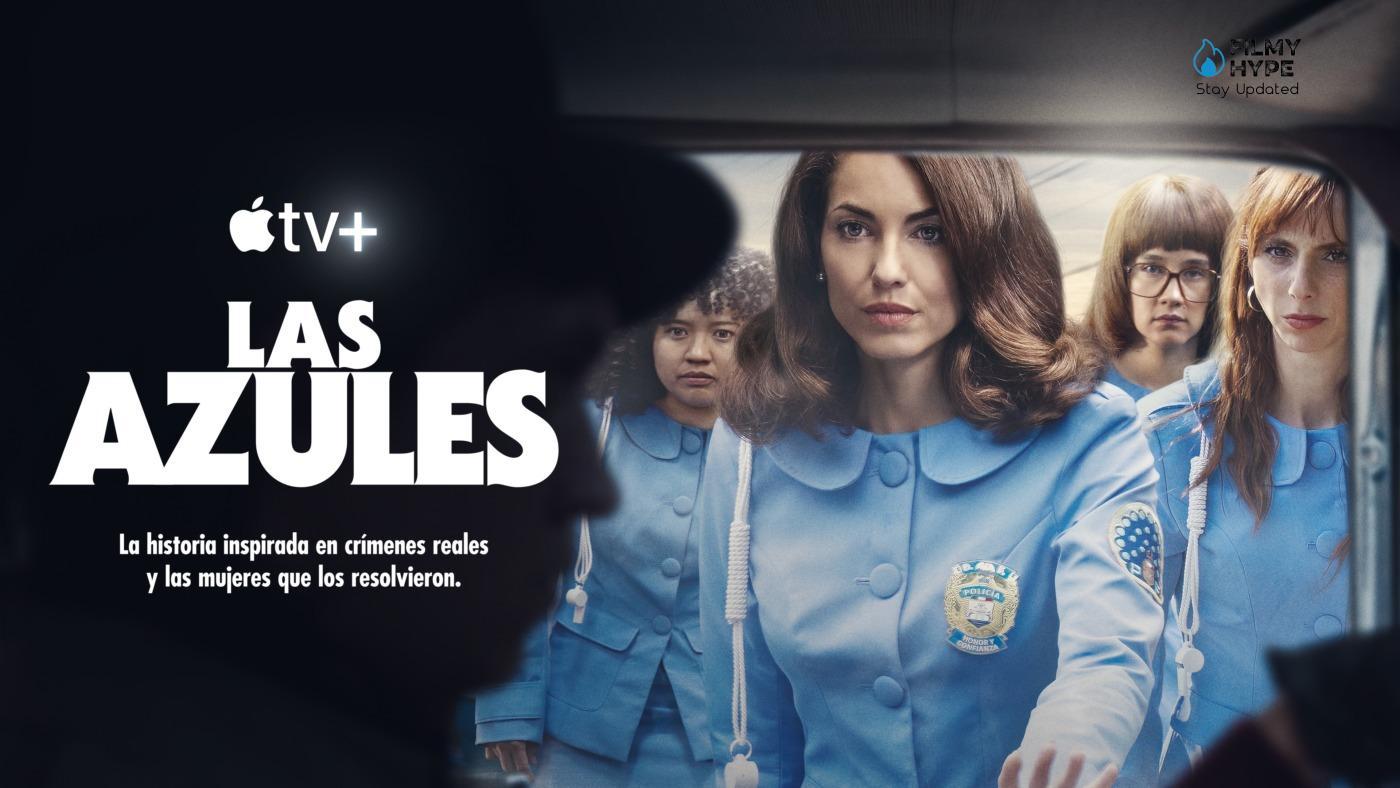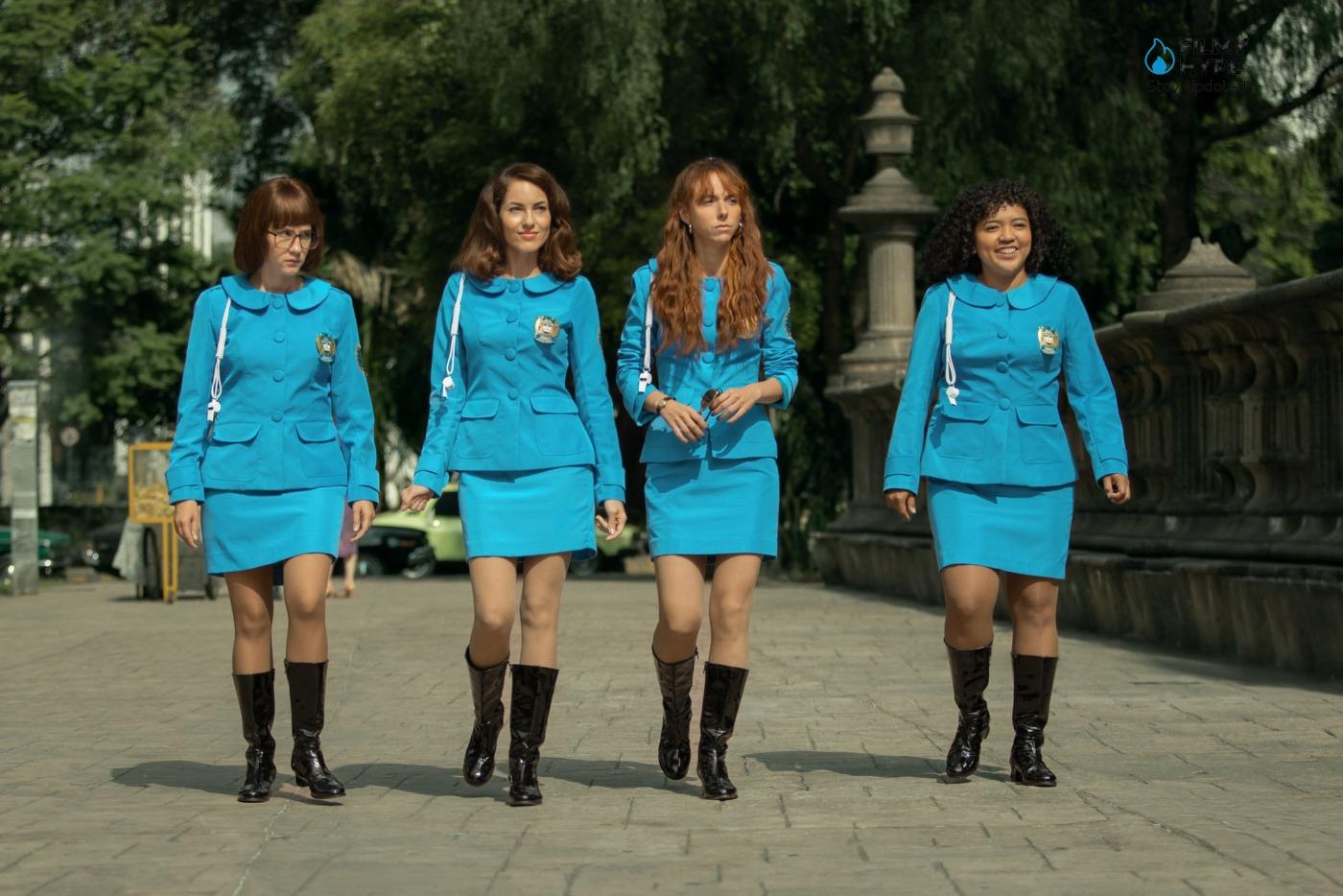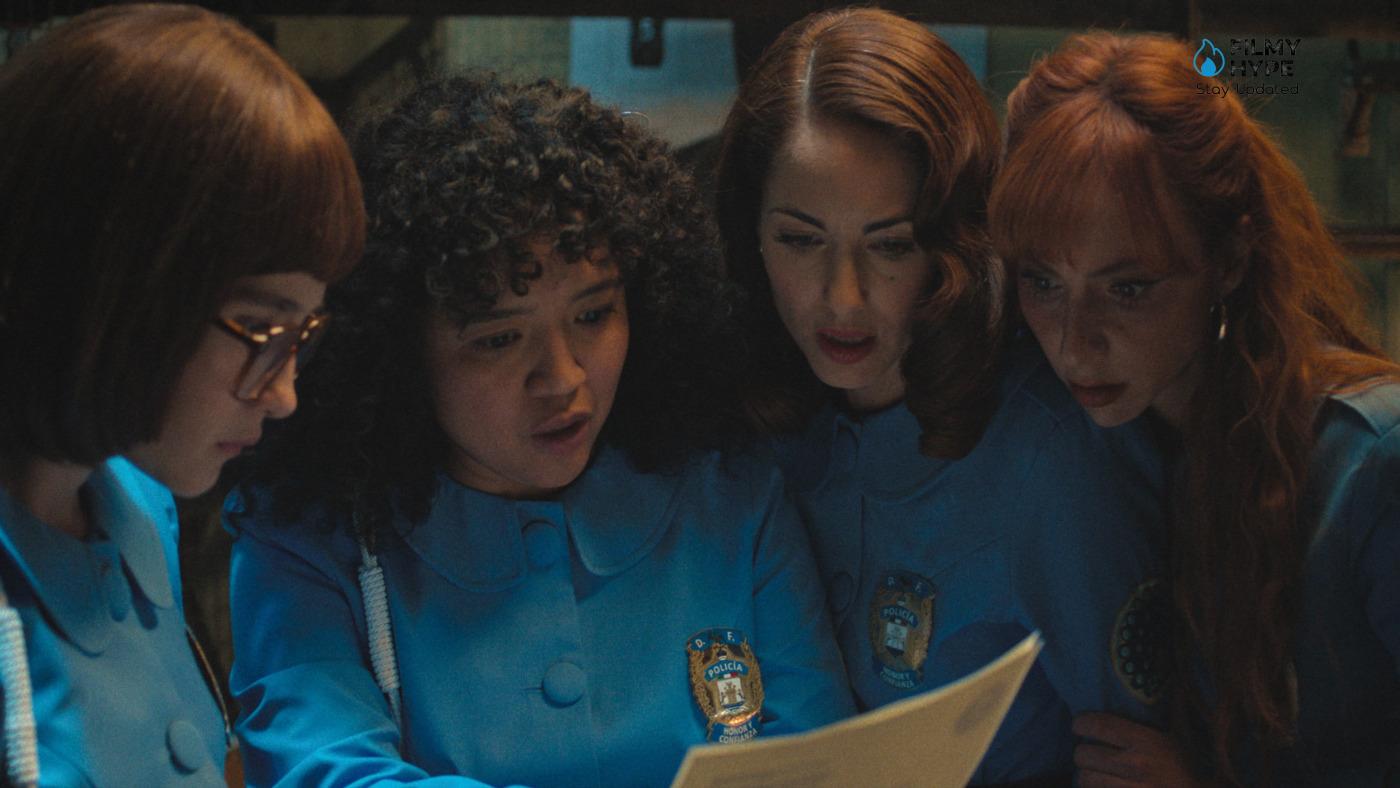Women in Blue Review (Las Azules): Apple TV+ Feminist Series About the First Mexican Policewomen
Cast: Bárbara Mori, Leonardo Sbaraglia, Christian Tappan, Miguel Rodarte, Costanza Andrade, Bruno Bichir, Horacio Garcia Rojas, Natalia Téllez, Ximena Sariñana, Orlando Moguel
Director: Alfonso Pineda Ulloa, Fernando Rovzar
Streaming Platform: Apple TV+
Filmyhype.com Ratings: 3/5 (three stars)
From July 31, with the first two episodes of ten, Women in Blue (Las Azules) will be released on Apple TV+. This crime drama TV series tells the story, inspired by true events, of a group of the first female police officers in Mexico in the early 1970s. A TV series that we do not hesitate to define as feminist, for how it highlights the prejudices that until not so many years ago still affected women who aspired to have a career in law enforcement, and which reminded us of A League of Their Own, the 1992 film (from which a Prime Video TV series was made a couple of years ago ) about the first women to play baseball. Trying not to give away any spoilers, let’s start this review with a summary of the plot of the series.

The concept of feminism is often misleading and is misinterpreted without first trying to understand the real angle or perspective (perhaps new) from which it is told or analyzed. In this specific circumstance, that of the latest Apple TV+ series Women in Blue (Women in Blue), we should perhaps more correctly speak of a story of female independence. The context is related to that of the first group of female police officers in Mexico, who really existed in the Seventies and are obviously fictionalized here. Women had the opportunity to assert themselves and demonstrate their abilities in a male-dominated world in which they were controlled by their fathers, brothers, and husbands.
Women in Blue Review (Las Azules): Story Plot
The “blue” protagonists of this series are four. There is Maria, a devoted housewife and wife of a career-oriented and unfaithful architect; her sister Valentina, who is a feminist always ready to demonstrate for women’s rights; Angeles, who works in a company that performs fingerprint analysis for the police but does not earn enough to support her grandmother; and finally Gabina, daughter of the captain of the Mexico City police and sister of detectives and an agent of the same precinct. It’s the early 70s, a time of power all over the world; in super-macho Mexico, the new progressive government decides to open the doors of police academies to women too. It may also be a media stunt to divert attention from a serial killer known as the Stripper who is killing young women in the capital, but the four women we mentioned before decide to make a change in their lives by enlisting to become police officers. They will succeed, despite the prejudices they will have to face in their families and at the police station, but they will have to work very hard to prove that they are worthy too. We stop here, inviting you to watch the official trailer of Women in Blue.

Women in Blue Review (Las Azules) and Analysis
Incredible as it may seem, it is “thanks” to a murderer nicknamed “The Undresser” (i.e. the one who stripped his victims) that the protagonists of this story had their chance. With his fourth victim in a row, the man who had made the new Mexican president win the elections, had the revolutionary idea of giving visibility to all those who until that moment had felt in the shadows: the mothers, the daughters, the sisters who timidly and quietly did the housework without asking for anything in return, perhaps showing some work interest here and there but without ever being taken seriously, especially for jobs of a certain prestige and value. Now, however, the men in their lives will have to listen to them when they decide to respond to this “call to arms” which is an advertising facade but which at the same time could give them the opportunity they were looking for. After all, History (and experience) teaches us that we must seize the opportunities that present themselves at our door, even if they are compromises that come in other forms if, in the end, we gain something from them.
The title of the series, created by director and showrunner Fernando Rovzar and Pablo Aramendi, refers to the color of the Mexican police uniform, a sign of power but also of responsibility. The focus is on four women who challenge the ultra-conservative norms of the time: María (Bárbara Mori), a mother and wife who discovers her husband’s betrayal despite having done everything right; her sister Valentina (Natalia Téllez), the black sheep of the family, who has always protested against the police but sees this as an opportunity to fix the system from within; Gabina (Amorita Rasgado), the youngest in a family of police officers who, however, do not want to see her in that role since she is the only female; Ángeles (Ximena Sariñana), a scholar and possible fingerprint analyst, who lives with her grandmother and wants to be able to afford some extra expenses that her current job does not allow her and that does not give her career opportunities.

These women will be selected for a long and hard test, led by a former policeman fallen into ruin, the only madman who can take the reins of a project so surreal for the time, they decide to start a parallel and secret investigation to capture the killer who is attacking their own sex. Women in Blue is a crime series with a particular tone since it combines drama and comedy, but without going overboard as often happens with Spanish-language productions. It also mixes themes, tones, and (sub)genres (perhaps too many), also through photography made of contrasting solid colors, and a dynamic use of direction (just like the editing), mimicking the military training of war movies and the great international thrillers. After all, Maria herself has always been a fan of detective stories and is usually quite good at tracking down the culprit, and more than a few female characters have an immoderate passion for soap operas with their improbable twists, just like some of the TV series itself.
Perhaps the authors put too much meat on the fire and perhaps the story could have been reduced to less than ten episodes of an hour each. At the same time, however, we cannot fail to praise the lightness of this work which still manages to recount extremely dramatic and decisive events in Mexican history, partly by inventing, and partly by adhering to testimonies of the time. There’s the protagonist, married and elegantly beautiful; there’s the rebellious younger sister; there’s the slightly strange and shy one and there’s the slightly overweight and self-confident one. Oh, and there’s also the gruff captain with a glorious past drowned in alcohol who, deep down, is a good guy.
We don’t know how much of it happened voluntarily and how much by resorting to somewhat typical (not to say stereotypical) characters, but the analogy with the legendary film with Geena Davis, Tom Hanks, and Madonna (which here has no real equivalent, in fact) seemed clear to us from the very first episodes. And if in that case, we were talking about a publicity stunt that brought the first women to play baseball in wartime, here we have a political stunt that opens the door to women in the police force in times of protests. In short, there is no shortage of common ground, and it is a compliment we pay to Women in Blue. Like in that movie, the balance between the different protagonist’s souls is what makes the series interesting, which revolves around a brutal case that never reaches horror. Women in Blue is thus a very pleasant series to watch (preferably in the original Spanish language), with characters you grow fond of and dynamics that, although already seen, work perfectly. Definitely a niche series not to be missed, especially if you love feminist stories.
Women in Blue Review (Las Azules): The Last Words
Women in Blue is another point of view on female independence. A coming-of-age novel of (more or less) adult women dressed in blue. The color, in this case, of power but also of the freedom of the protagonists, who will have to clash with the taboos and rules of the time to try to find their place in the world and, above all, in their home and work microcosm. The key lies not in power, but in the use of that power, deriving from a badge (a symbol) applied to the chest. Despite a few pacing issues, Women in Blue is a captivating series that offers a fresh perspective on the crime drama genre. It’s a must-watch for fans of strong female characters and those interested in exploring the complexities of the past.









